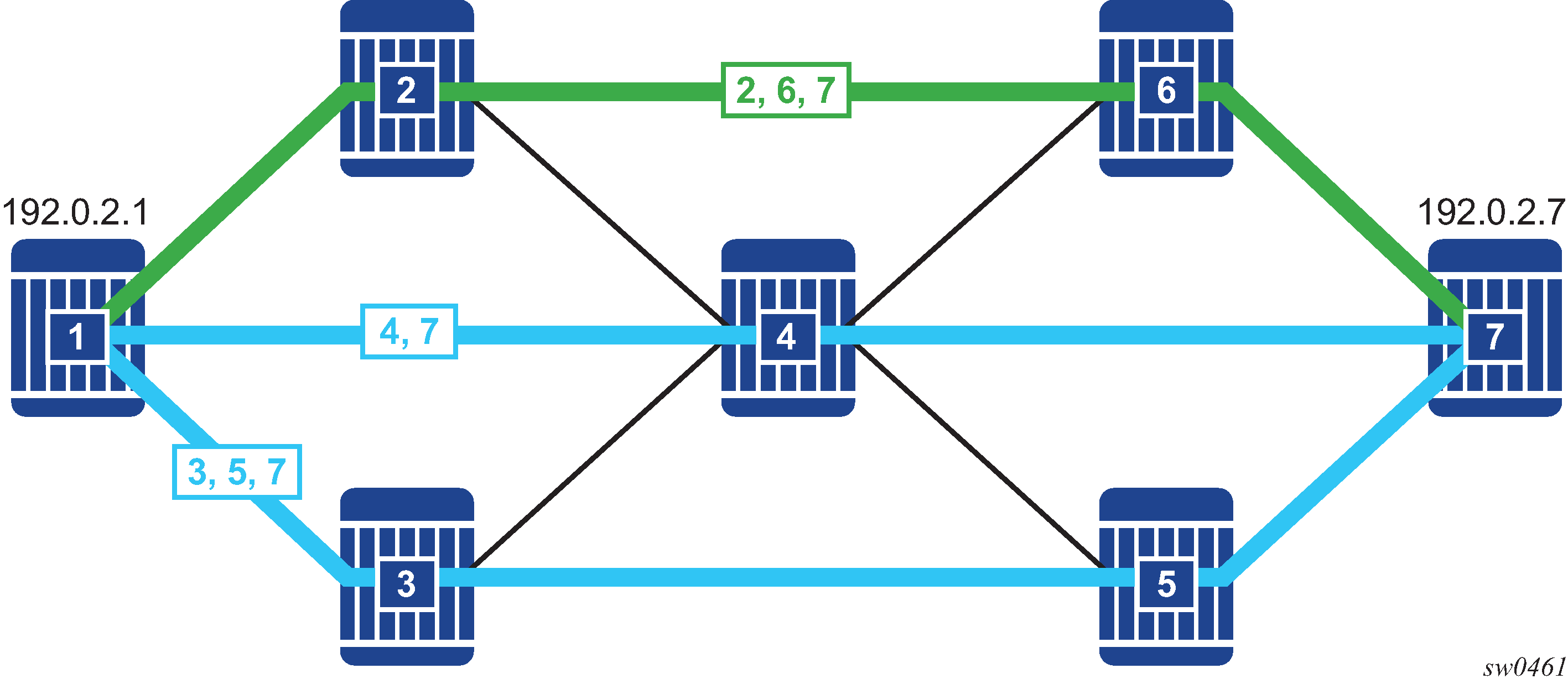Segment routing policies
The concept of a Segment Routing (SR) policy is described by the IETF draft draft-ietf-spring-segment-routing-policy. A segment-routing policy specifies a source-routed path from a head-end router to a network endpoint, and the traffic flows that are steered to that source-routed path. A segment-routing policy intended for use by a particular head-end router can be statically configured on that router or advertised to it in the form of a BGP route.
The following terms are important to understanding the structure of a segment routing policy and the relationship between one policy and another:
-
segment routing policy
This is a policy identified by the tuple of (head-end router, endpoint and color). Each segment routing policy is associated with a set of one or more candidate paths, one of which is selected to implement the segment routing policy and installed in the dataplane. Certain properties of the segment routing policy come from the currently selected path - for example, binding SID, segment lists, and so on.
-
endpoint
This is the far-end router that is the destination of the source-routed path. The endpoint may be null (all-zero IP address) if no specific far-end router is targeted by the policy.
-
color
This is a property of a segment routing policy that determines the sets of traffic flows that are steered by the policy.
-
path
This is a set of one or more segment lists that are explicitly or statically configured or dynamically signaled. If a path becomes active then traffic matching the segment routing policy is load-balanced across the segment lists of the path in an equal, unequal, or weighted distribution. Each path is associated with:
- a protocol origin (BGP or static)
- a preference value
- a binding SID value
- a validation state (valid or invalid)
-
binding SID
This is a SID value that opaquely represents a segment routing policy (or more specifically, its selected path) to upstream routers. BSIDs provide isolation or decoupling between different source-routed domains and improve overall network scalability. Usually, all candidate paths of a segment routing policy are assigned the same BSID.
These concepts are illustrated by the following example. Suppose there is a network of 7 nodes as shown in Network example with 2 segment routing policies and there are two classes of traffic (blue and green) to be transported between node1 and node 7. There is a segment routing policy for the blue traffic between node1 and node7 and another segment routing policy for the green traffic between these same two nodes.

The two segment routing policies that are involved in this example and the associated relationships are depicted in Relationship between segment routing policies and paths.
